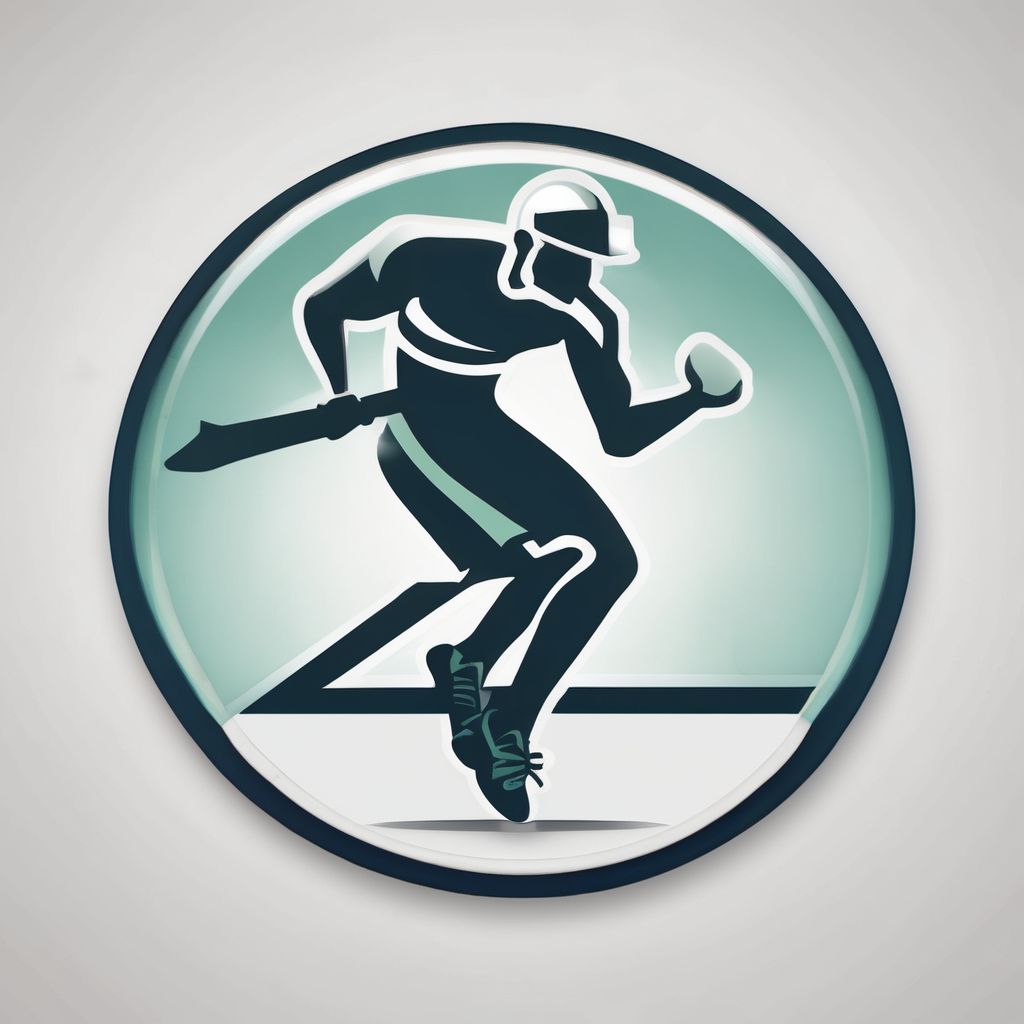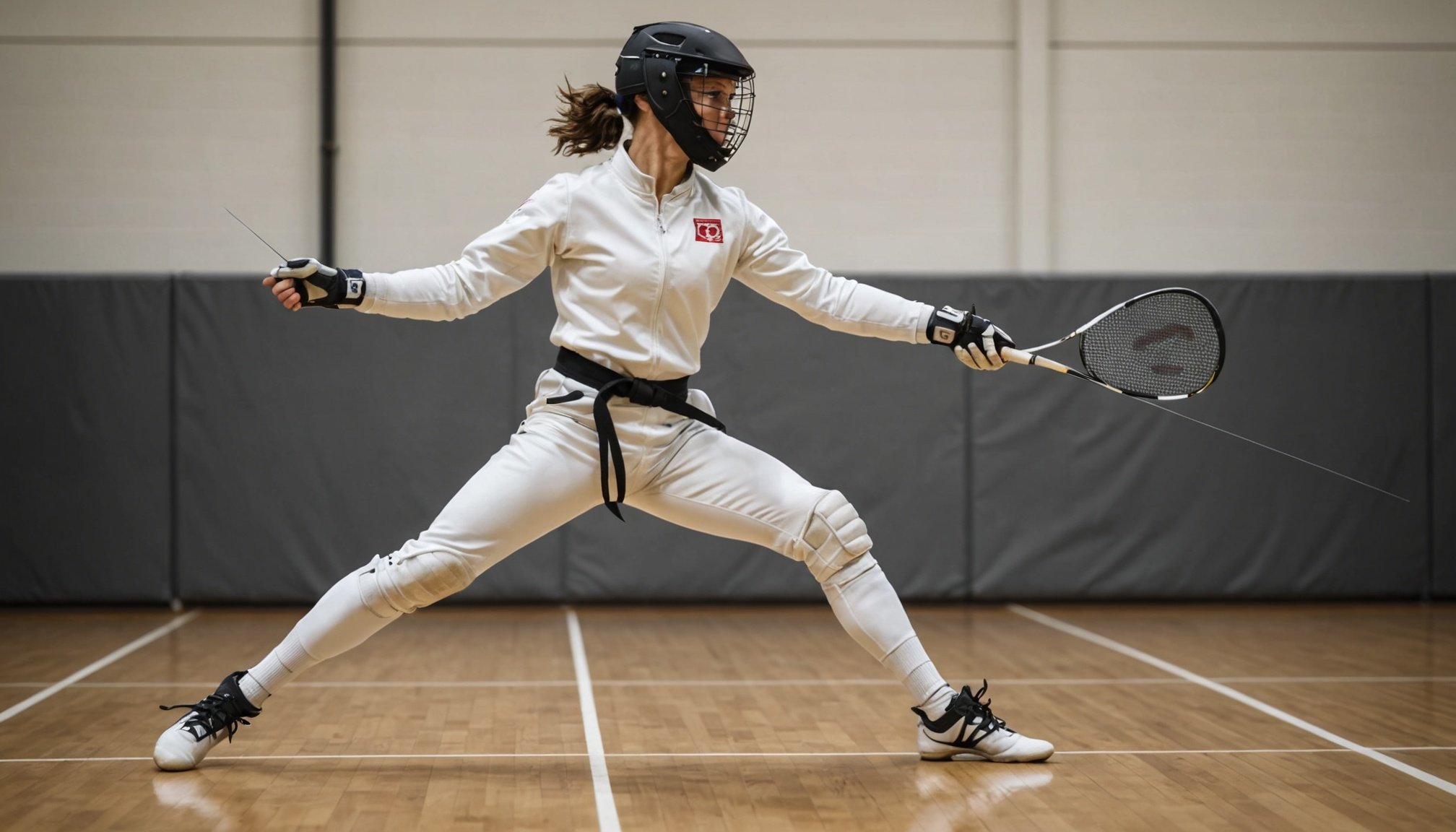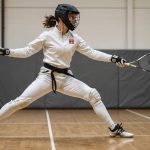Importance of Footwork in Fencing
In fencing, footwork forms the foundation for effective techniques, acting as the bridge between strategy and execution. Mastering footwork is not merely about dexterity; it significantly influences a fencer’s overall agility. Fencers with well-honed footwork display superior fencing performance by seamlessly transitioning between offensive and defensive maneuvers.
The relationship between footwork and agility is symbiotic. Enhanced agility through precise foot movements enables fencers to swiftly close in on their opponent or retreat to safety, maintaining control of the bout. Agility also supports effective balance, allowing fencers to execute complex techniques with precision.
In parallel : Boost your water polo goalkeeper’s reflexes: essential drills for peak performance
Footwork impacts both offensive and defensive strategies. On the attack, quick footwork allows for unexpected moves, catching opponents off guard. Conversely, adept footwork aids in forming a robust defense, creating a dynamic range of motion that makes an opponent’s attack difficult to predict.
To achieve mastery, fencers must cultivate their footwork’s speed, accuracy, and adaptability. This ensures they can react instantaneously to an opponent’s actions, making footwork a crucial component of a fencer’s tactical repertoire. Understanding and practising nuanced footwork is critical, as it redefines one’s competitive edge and enhances the overall effectiveness of fencing skills.
In parallel : Elevate your pole vault performance: how core stability drives athlete success
Essential Footwork Techniques
Footwork drills are crucial in fencing, providing a structured approach to developing agility and precision. Practising footwork techniques consistently is fundamental to acclimatize the body to a range of movements, increasing efficiency in actual bouts.
Basic Footwork Movements
Emphasizing fundamental movements such as the advance, retreat, and lunge lays the groundwork for more advanced techniques. These movements form the core of footwork drills and agility training, reinforcing balance and posture. Fencers should focus on executing these moves with speed and fluidity, ensuring they remain adaptable to varying situations.
Advanced Footwork Techniques
Advanced techniques like the fleche and appel require an integrated approach, blending speed with footwork drills to enhance overall agility. Mastery of these movements involves understanding their tactical application and the rhythm required to outmaneuver opponents. Incorporating these advanced techniques in training routines leads to improved strategic options during competitions.
Common Footwork Mistakes
A frequent error is overextending during lunges, leading to a loss of balance. Practising controlled movements is vital to prevent such lapses. Neon tense posture can also hinder mobility; maintaining a relaxed, ready stance ensures agility is not compromised. Fencers should regularly critique and adjust their techniques to foster improvement and prevent these common pitfalls.
Drills to Enhance Agility and Speed
Enhancing agility and speed through well-structured training routines is pivotal for any fencer seeking competitive edge. Agility drills specifically designed for fencing are crucial to sharpening movements and ensuring swift, precise transitions. These drills range from basic footwork exercises to more complex sequences involving direction changes and speed bursts.
Incorporating footwork exercises into regular training amplifies their effectiveness. Regular repetition not only builds muscle memory but also improves instinctual reactions during bouts. For optimal results, these exercises should incorporate elements like cone drills and ladder drills, which target balance, coordination, and explosive movement. By gradually increasing the intensity and complexity, fencers can observe noticeable advancement in their performance.
Measuring progress in agility can involve timing specific drills to track improvements in speed or using agility tests that assess directional changes and reaction times. Adopting a systematic approach, such as maintaining a log of completion times and hurdles faced during exercises, provides a clear gauge of progress and areas needing improvement.
Integrating these methods into a fencer’s routine not only enhances footwork proficiency but also boosts overall confidence, resulting in a marked increase in fencing performance.
Expert Tips for Mastering Footwork
Insight from champions and experts can dramatically enhance your footwork mastery. Fencers stress the importance of quality coaching and consistent practice routines, tailoring exercises to individual needs for optimal results.
Training Insights from Champion Fencers
Champion fencers often share secrets of their success, highlighting tailored coaching tips. This involves focusing on practising specific agility training techniques repeatedly and maintaining a high level of mental discipline during training. Understanding your strengths and areas for improvement allows for personalized footwork drills, making your routine highly effective.
Mental Aspects of Footwork
The mental game is as crucial as the physical. Developing strong mental strategies enhances focus, ensuring you adapt footwork techniques smoothly in bouts. Visualization techniques—imagining successful moves—contribute to achieving footwork mastery, aligning mental resolve with physical execution.
Importance of Consistency in Practice
Consistency in practice cannot be overstated. Establishing a structured training schedule reinforces muscle memory and adaptability in fencing performance. Breaking your practice into manageable segments—focusing on specific footwork exercises—facilitates noticeable improvements in agility over time. Make adjustments based on performance evaluations to ensure constant progression. By diligently following expert guidance, your competence and confidence in fencing grow substantially.
Visual Aids and Resources
In the realm of fencing, visual aids such as footwork diagrams and training videos serve as vital tools for mastering intricate techniques. Leveraging these resources can significantly enhance a fencer’s understanding and execution of foot movements.
Recommended Videos Demonstrating Key Footwork Techniques
Training videos are invaluable for illustrating essential footwork, providing a dynamic guide for movements like the advance, retreat, and lunge. By observing expert fencers, practitioners can grasp the nuances of speed and precision required in these techniques, enhancing their overall footwork drills.
Diagrams Explain Foot Positioning and Movement
Diagrams are beneficial for offering a static view of foot positioning, which is crucial for maintaining balance and accuracy during bouts. Such visual aids depict the alignment of feet in different stances, aiding agility training by clarifying ideal positioning under varied scenarios.
Additional Resources for Continued Learning and Practice
Beyond videos and diagrams, instructional materials such as online tutorials and strategy books deepen one’s knowledge, supporting continual growth in footwork techniques. These resources often include detailed explanations and troubleshooting tips, fostering an enriched learning environment for fencers striving to refine their craft.
The Link Between Footwork and Performance
Footwork is a cornerstone of fencing performance, directly influencing a competitor’s agility and overall capabilities. Effective footwork balances speed, precision, and adaptability, essential traits for navigating the fluid dynamics of a fencing bout.
Case Studies of Successful Fencers
Many renowned fencers attribute their success to superior footwork techniques. For example, champions often highlight how developing specific footwork drills honed their agility, enabling swift, decisive maneuvers. These skills allowed them to maintain a competitive edge in face of the unpredictability of matches.
Statistical Analysis of Footwork Impact
Research and data within the fencing community underscore the significant role footwork plays in performance. Studies reveal that fencers with refined footwork experience a 30% improvement in offensive and defensive transitions, showcasing the benefits of meticulous footwork training.
Advice on Evaluating Personal Performance
To optimise personal performance, fencers are advised to evaluate their footwork regularly. This involves recording training routines, analysing video footage, and timing drills to measure progress. By focusing on key performance metrics such as speed and distance covered, fencers can tailor their practices to enhance agility and maintain a competitive advantage.





